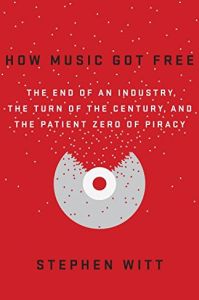Join getAbstract to access the summary!

Join getAbstract to access the summary!
Stephen Witt
How Music Got Free
The End of an Industry, the Turn of the Century, and the Patient Zero of Piracy
Viking, 2015
What's inside?
Tune in to this fascinating history of the mp3 and related music, culture, tech and politics.
Recommendation
Journalist Stephen Witt tracks the history of the mp3 music player from its invention to its adaptation as a standard feature of daily life. Witt frames his tale through the prism of two men’s careers: record executive Doug Morris and pioneering pirate music uploader extraordinaire Bennie Lydell Glover. One man made millions off the changing habits of people who listen to popular music; the other served those habits faithfully and wound up in jail. Witt’s story comes most alive when he goes into the disparities between Morris’s and Glover’s lives – privilege, race, earnings and impact – as his narrative goes back and forth between them. Except for those deeply vested in these worlds, the story can sometimes be hard to follow, such as when Witt dissects the arcane politics, specifications and lab obsessions involved in the development of digital music formats. The technically uninterested should skim just those early pages; the rest is as totally satisfying as a good album. getAbstract recommends Witt’s reportage to investors, social historians, music lovers, and anyone interested in what drives the profit-and-loss-of-selling culture in the digital age.
Summary
About the Author
Journalist Stephen Witt has worked for hedge funds and has written for The New Yorker.



















Comment on this summary